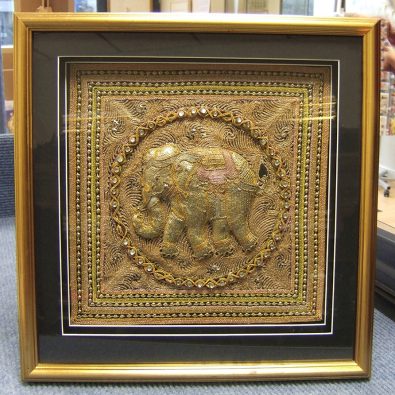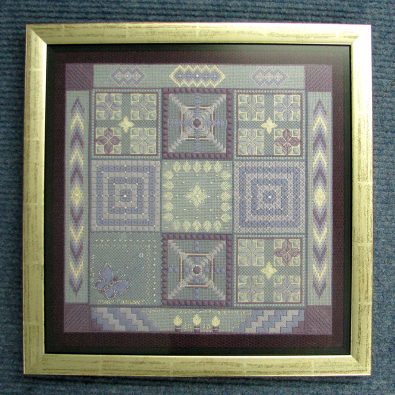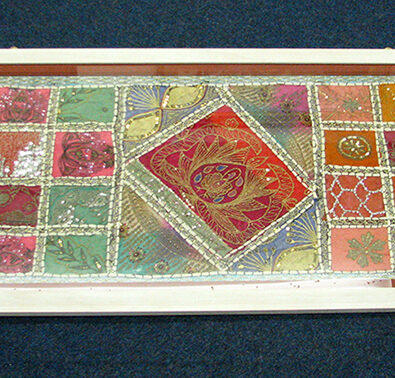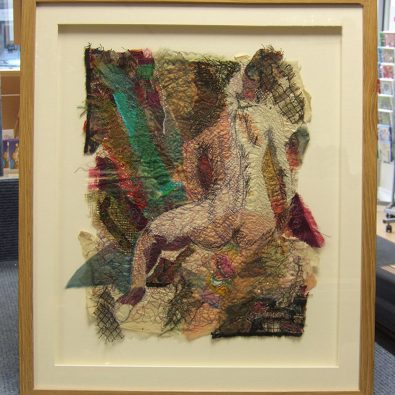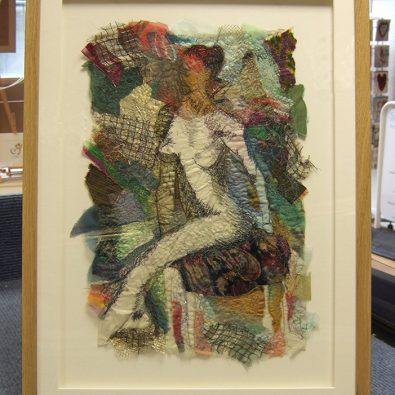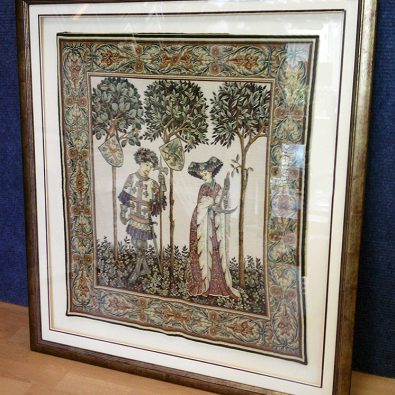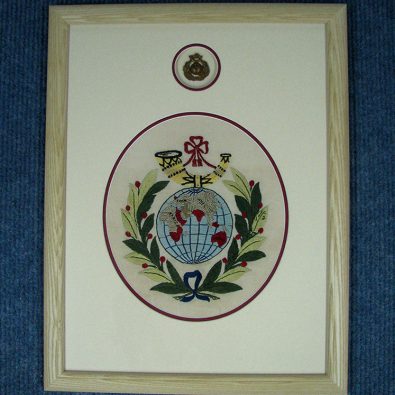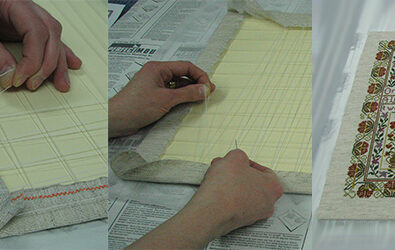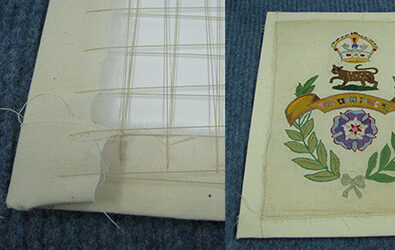Needlepoints & Tapestry
Light-Weight Textiles
We advise a mount board is used to prevent the textile from making contact with the glass, this lowers the risk of condensation forming mould on the fabric. The right carefully chosen mount can complement and enhance the work.
There are three adhering methods are used to prevent a fabric from rippling over time.
- Perfect mount method: we stretch the textile over an adhesive layer of perfect mount, to allow us to flatten and square the image.
- Pressure method: used for silks and fine clothes as no adhesives are used to secure the fabric in place. An aperture is cut into board, the cloth is placed into the aperture and the board replaced which gently stretches the fabric flat.
- Traditional lacing method: the fabric is stitched over white conservation board so it lies flat.
Heavy-Weight Textiles
There are two main methods of mounting large, thick and heavy textiles. Relief textiles need extra spacing from the glass so a foam spacer can be used to create this distance, a shadow mount can be used to create a shadowed effect to accentuate the depth of the frame.
- Heavier weighted textiles need to be stapled on to an acid neutral board as standard adhesives are not strong enough. The staples are applied well clear of the image area and covered by mount card.
- Large textiles may need to be stretched over canvas bars in order to kept the textile taught for display.
